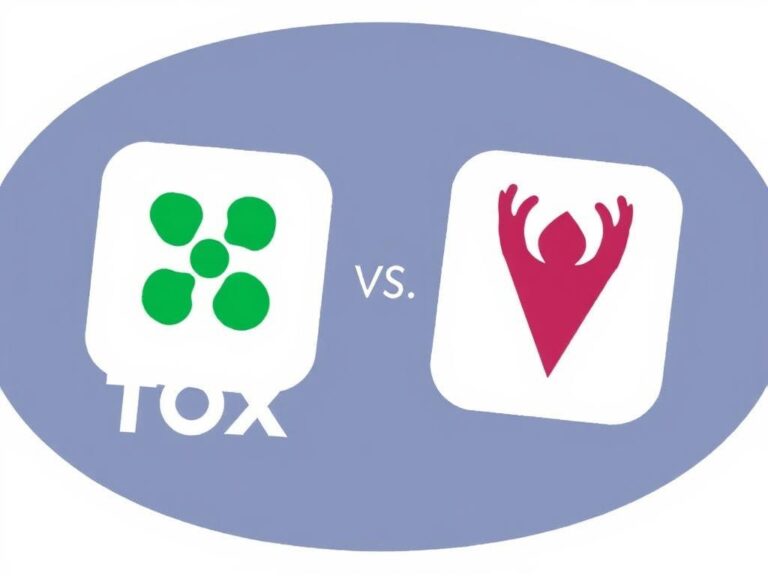Unlocking Ethereum’s P2P Networking Layer: The Backbone of Decentralized Connectivity
Understanding the Foundation of Ethereum’s P2P Network
Ethereum, one of the most prominent blockchain platforms, operates fully on a peer-to-peer (P2P) network layer, which serves as the indispensable foundation for its decentralized structure. Unlike traditional centralized systems where communication flows through a fixed central server, Ethereum employs a P2P networking layer that connects every node directly or indirectly to one another. This design enables Ethereum to be resilient, censorship-resistant, and highly redundant. Each participant, or “peer,” shares information with others, making the entire network both secure and efficient.
The P2P networking layer in Ethereum handles various crucial tasks, including the distribution of transactions, block propagation, and consensus coordination. To break it down simply, when you initiate a transaction or when a miner successfully mines a new block, this information is spread quickly across the network through this P2P mesh. No single point of failure exists because the network’s connectivity is maintained through numerous pathways, ensuring that no single entity can monopolize the flow of data or halt operations.
Key Components of Ethereum’s P2P Infrastructure
To truly appreciate how Ethereum’s P2P networking layer functions, it helps to understand its core components. These elements work together to create a powerful and scalable network:
- DevP2P Protocol: This is the foundational protocol that manages peer discovery, handshakes, and communication in Ethereum. DevP2P sets the rules for how nodes find and connect with each other.
- ENR (Ethereum Node Records): Each node maintains an ENR, which contains information like the node’s IP address, port, and public key. ENRs are exchanged to help peers find each other and establish secure connections.
- Eth Protocol: After peers connect using DevP2P, they communicate using the Eth subprotocol, which is responsible for syncing blockchain data such as blocks and transactions.
- Transaction Pool and Gossip: The transaction pool holds unconfirmed transactions, and gossip protocols rapidly broadcast these transactions to connected peers ensuring timely validation and inclusion in upcoming blocks.
How Peer Discovery Works in Ethereum

Peer discovery is the gateway to building reliable P2P connections. Ethereum uses a specialized peer discovery protocol similar to Kademlia Distributed Hash Table (DHT), which enables nodes to locate others in a decentralized fashion. Instead of querying a central server, nodes ask peers for lists of other nodes, progressively finding those closest to their own ID in the network’s logical keyspace.
Here’s a simplified breakdown of the peer discovery workflow:
- When a node goes online, it boots up with a small set of “bootstrap nodes” whose addresses are hardcoded.
- The node queries these bootstraps for other active peers.
- Based on responses, the node requests more peers from those it discovers.
- This iterative process continues until the node has a robust set of connections, optimizing for network latency and reliability.
Below is a concise table summarizing peer discovery steps:
| Step | Description |
|---|---|
| 1 | Connect to bootstrap nodes |
| 2 | Request peer lists from known nodes |
| 3 | Query newly discovered nodes for further peers |
| 4 | Maintain and optimize active peer set |
Security and Reliability in Ethereum’s P2P Layer

Security is paramount for any decentralized network, and Ethereum’s P2P network incorporates several mechanisms to guard against attacks. Each connection is established via a cryptographic handshake, ensuring peers are authenticated and encrypted communication is enforced. This process helps prevent man-in-the-middle attacks and unauthorized data tampering.
Additionally, the decentralized nature of the P2P layer inherently improves fault tolerance. If some nodes go offline or behave maliciously, the network adapts by rerouting communication through other peers. This redundancy ensures continuous information propagation and maintains blockchain integrity.
Another important aspect is how nodes handle incoming data with validation before forwarding it along. For example, invalid transactions or blocks are rejected, preventing the spread of harmful data. This validation mechanism keeps the network lean and trustworthy without central control.
The Role of Gossip Protocols in Data Dissemination
Gossip protocols form a core part of the P2P networking layer by enabling rapid and reliable dissemination of data across peers. Imagine a scenario where a new transaction enters the network; through gossip, the transaction is broadcasted from one node to multiple others, which then repeat the process, allowing the information to spread exponentially fast across the entire network.
Using gossip, Ethereum ensures that information doesn’t get stuck or bottleneck on a single path. The protocol reduces latency and increases the chances of timely transaction processing and block confirmation. Gossip also introduces robustness against network partitions: as long as some degree of connectivity exists, the network’s awareness of the most recent blockchain state remains fluid.
Challenges Faced by Ethereum’s P2P Networking Layer
Despite its strengths, Ethereum’s P2P network confronts several challenges that are worth noting. Network scalability is a key concern. As the number of participants grows, managing peer connections and data transmission without causing overhead becomes increasingly complex.
Network churn — the frequent joining and leaving of nodes — also impacts stability. Ethereum’s P2P layer must constantly discover and re-establish connections, which consumes bandwidth and computing resources. This is tackled through efficient peer management protocols that remove unresponsive or slow peers periodically.
Another issue is maintaining privacy and anonymity. Since nodes broadcast data openly within their peer neighborhoods, techniques like traffic analysis could potentially reveal node locations or user activity patterns. Developers continue to work on improvement proposals that introduce privacy-enhancing features in the P2P layer.
Future Developments and Upgrades in Ethereum P2P Networking
Ethereum is a dynamic ecosystem that evolves its technology stack continuously. The P2P networking layer is no exception. With the upcoming Ethereum upgrades, such as the shift to Ethereum 2.0 and the implementation of the Lighthouse client enhancements, improvements are being made to boost efficiency, security, and scalability.
One interesting direction is the integration of libp2p, a modular networking stack originally developed for IPFS (InterPlanetary File System). Libp2p supports multi-protocol communication, advanced peer discovery, and adaptive routing — qualities that can further enhance Ethereum’s P2P layer robustness.
Moreover, efforts like “discv5” (a more advanced version of Ethereum’s discovery protocol) aim to enable better remote node lookup, NAT traversal, and stronger privacy guarantees. These advancements will help nodes maintain better connectivity even under adverse network conditions.
Summary Table: Ethereum P2P Layer Components and Their Roles
| Component | Role |
|---|---|
| DevP2P Protocol | Manages peer discovery and network messaging |
| Ethereum Node Records (ENR) | Stores node metadata for discovery |
| Eth Subprotocol | Responsible for blockchain data syncing |
| Gossip Protocol | Broadly distributes transactions and blocks |
| Transaction Pool | Stores unconfirmed transactions before inclusion |
How You Can Observe or Interact with Ethereum’s P2P Layer

For enthusiasts and developers interested in diving into Ethereum’s P2P networking, various tools and clients offer visibility into peer connections and network health. Clients like Geth and OpenEthereum provide command-line options and APIs to list connected peers, check network latency, and monitor data propagation events.
Running your own full node allows direct participation in the P2P network, making your node part of the web of peers that uphold Ethereum’s blockchain integrity. By joining the network, you contribute to decentralization and security, while gaining firsthand insight into how P2P networking shapes Ethereum’s ecosystem.
Conclusion
Ethereum’s P2P networking layer is a vital piece of the decentralized puzzle that enables the blockchain to operate without central points of control. Through robust peer discovery mechanisms, secure encrypted connections, efficient gossip protocols, and ongoing innovations like libp2p and discv5, Ethereum maintains a resilient and scalable communication fabric. While challenges such as scalability, churn, and privacy remain, continuous research and development efforts are paving the way for stronger, more efficient networking that fuels Ethereum’s mission of a decentralized world computer. Whether you’re a developer, user, or curious observer, understanding Ethereum’s P2P network unveils the true complexity and beauty of how decentralized systems stay connected and synchronized in a trustless environment.






